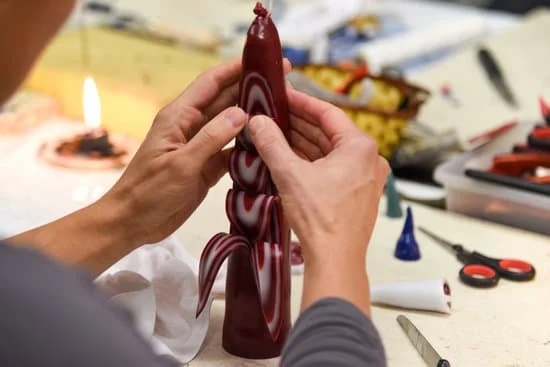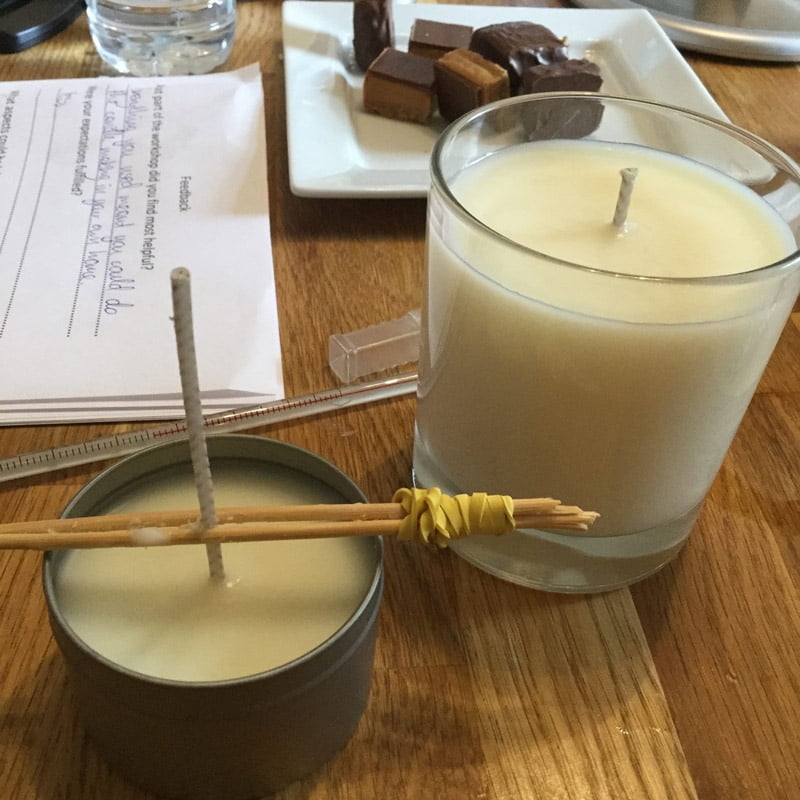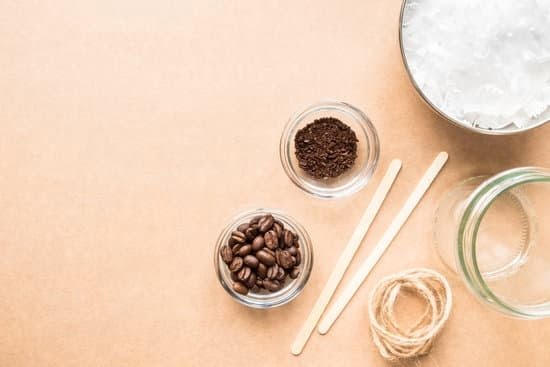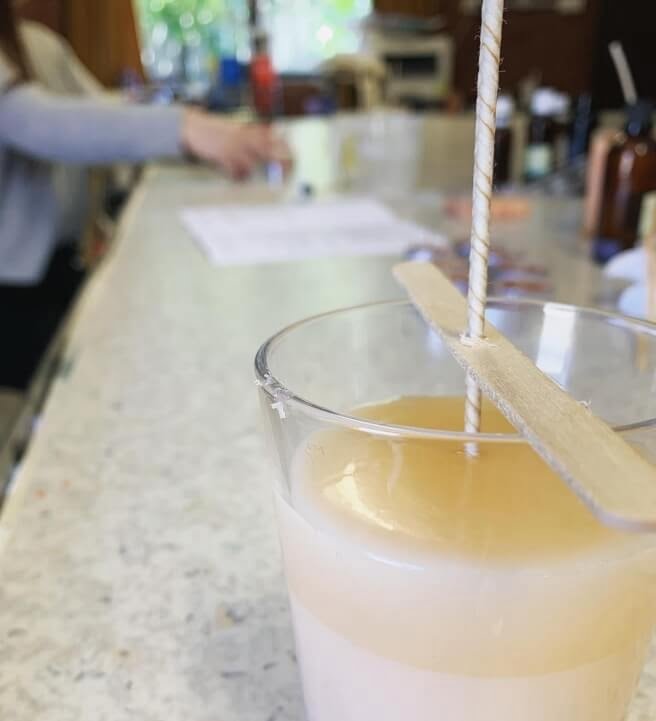When it comes to candle making, choosing the best scent is a crucial element that can elevate the entire experience. The right fragrance has the power to evoke emotions, create ambiance, and set the mood in any space. Whether you are a seasoned candle maker or just starting out, understanding how to harness the power of scent is essential in crafting high-quality candles that captivate the senses.
Scent selection plays a pivotal role in determining the success of your candle creations. Different types of candle scents, from floral and fruity to woody and herbal, each have their unique characteristics that can transform a simple candle into a sensory masterpiece. By carefully choosing fragrance oils that complement your vision, you can create candles that not only smell delightful but also leave a lasting impression on anyone who encounters them.
In this comprehensive guide on Candle Making Best Scent, we will delve into the world of fragrance oils, scent combinations, and tips for achieving the perfect balance in your candles. From understanding scent throw to maximizing fragrance longevity, we will explore every aspect of creating captivating scents that enhance the overall candle-making process. So get ready to immerse yourself in the art of scent blending and discover how you can elevate your candles with the best fragrances available.
Understanding the Basics
Candle making is not just about creating a source of light and ambiance; it’s also about incorporating the perfect scent to enhance the overall experience. Choosing the right fragrance for your candles can truly elevate the mood and atmosphere of any space. When it comes to candle scents, there are various types to consider, each with its unique characteristics and benefits.
One of the most popular types of candle scents is essential oils. These oils are derived from natural sources such as plants, flowers, fruits, and herbs, giving them a pure and authentic aroma. Essential oil-based candles are known for their therapeutic properties and ability to promote relaxation and well-being. Some commonly used essential oil scents for candle making include lavender, eucalyptus, citrus, and peppermint.
Another type of candle scent comes from fragrance oils, which are synthetic or artificially created fragrances designed to mimic specific scents like vanilla, cinnamon, or fresh linen. Fragrance oils offer a wide range of options for candle makers who want to explore an extensive array of aromas that may not be possible with essential oils alone.
These oils often have a strong and long-lasting scent throw when used in candles, making them ideal for creating powerful and impactful fragrances in your home.
The choice between essential oils and fragrance oils ultimately depends on personal preference and the desired effect you want to achieve with your candles. While some prefer the natural essence of essential oils, others enjoy the versatility and boldness of fragrance oils. Experimenting with different types of candle scents will help you discover what works best for your candle making projects while allowing you to create unique combinations that cater to your individual taste preferences.
| Types of Candle Scents | Description |
|---|---|
| Essential Oils | Natural scents derived from plants, flowers, fruits, or herbs known for their therapeutic properties. |
| Fragrance Oils | Synthetic fragrances designed to replicate specific scents like vanilla or cinnamon with a strong and long-lasting scent throw. |
Choosing the Best Fragrance Oils for Candle Making
When it comes to creating the perfect candle, choosing the best fragrance oils is essential. The scent of a candle plays a significant role in setting the mood and atmosphere of a room, making it imperative to select the right fragrance that resonates with your preferences and purpose. There are a wide variety of fragrance oils available for candle making, ranging from floral and fruity to woody and spicy, allowing you to experiment and create unique combinations.
One important factor to consider when choosing fragrance oils for candle making is the concentration of the oil. Higher quality fragrance oils contain a higher concentration of scent, resulting in a more potent and long-lasting aroma when the candle is burned. It is recommended to opt for premium fragrance oils that are specifically formulated for candle making to ensure optimal performance and superior scent throw.
In addition to concentration, it is crucial to pay attention to the compatibility of fragrance oils with the wax type you are using for your candles. Certain fragrances may work better with soy wax, while others may be more suitable for beeswax or paraffin wax.
Understanding how different fragrance oils interact with various waxes will help you achieve the best results in terms of scent strength and longevity. Experimenting with different combinations can lead to discovering new favorite scents for your candle making projects.
| Best Practices | Scent Combination |
|---|---|
| Use high-quality fragrances | Lavender + Vanilla |
| Consider compatibility with wax type | Sandalwood + Rose |
| Experiment with different combinations | Citrus + Basil |
Tips for Achieving the Perfect Scent Balance in Your Candles
When it comes to creating the perfect candle, achieving the right scent balance is essential. The aroma of a candle can evoke emotions, memories, and set the ambiance for any space. However, finding that ideal balance of scent can be a bit tricky. Here are some tips to help you in achieving the perfect scent balance in your candles.
Start With Quality Fragrance Oils
One of the most crucial aspects of achieving a balanced scent in your candles is starting with high-quality fragrance oils. The quality of your fragrance oils will significantly impact the overall scent throw and longevity of your candles. Look for fragrance oils specifically designed for candle making, as they are formulated to blend well with wax and provide a consistent aroma when burned.
Consider the Strength of the Fragrance
When choosing fragrance oils for your candles, consider the strength of the scent you desire. Some fragrances are naturally stronger than others, so adjusting the amount of oil you use based on the intensity of the scent can help achieve a balanced aroma. It’s essential to strike a balance between too little oil, resulting in a weak scent throw, and too much oil, which can lead to overpowering or artificial-smelling candles.
Experiment With Mixing Scents
Another tip for achieving the perfect scent balance in your candles is to experiment with mixing different fragrances. By combining complementary scents, you can create unique and complex aromas that appeal to a wide range of preferences. Be mindful of how different scents interact with each other and start by blending small amounts before committing to larger batches. Mixing scents allows you to customize your candles and create signature fragrances that set your creations apart from store-bought options.
The Science Behind Scent Throw and How to Maximize It
When it comes to candle making, scent throw plays a crucial role in determining the effectiveness of your candles. Scent throw refers to the strength and reach of the fragrance when the candle is burning. Maximizing scent throw is essential to ensure that your candles fill a room with a pleasant aroma, creating a welcoming ambiance. Understanding the science behind scent throw can help you create candles that not only smell amazing but also have a long-lasting effect.
To maximize scent throw in your candles, consider the following factors:
- Choose high-quality fragrance oils: The quality of the fragrance oil you use can significantly impact the scent throw of your candles. Opt for premium oils specifically formulated for candle making for best results.
- Proper wick selection: The size and type of wick you choose can affect how efficiently your candle burns and releases fragrance. A wick that is too small may not create enough heat to release the scent, while a wick that is too large can cause soot buildup.
- Allow proper curing time: Allowing your candles to cure for at least 24-48 hours after pouring can help the fragrance bind with the wax effectively, enhancing the scent throw when the candle is lit.
Another important factor to consider when maximizing scent throw is the type of wax you use. Different types of wax such as soy wax or beeswax can affect how well a candle holds and releases fragrance.
Experimenting with different types of wax and fragrance combinations can help you find the perfect balance to achieve optimal scent throw in your candles. By understanding and implementing these techniques, you can create candles with the best scent possible, elevating the overall experience for yourself and anyone who enjoys them.
Best Practices for Scenting Different Types of Candles (Eg Soy Wax, Beeswax)
When it comes to creating candles, choosing the right scent is crucial in ensuring a successful and satisfying end product. However, the type of wax used in candle making can affect how well a fragrance oil blends and performs. Understanding the best practices for scenting different types of candles, such as soy wax or beeswax, can help you achieve the perfect balance of fragrance that will enhance your candle-making experience.
Soy Wax Candles
Soy wax is known for its clean burn and ability to hold onto scents effectively. When scenting soy wax candles, it is important to use high-quality fragrance oils specifically designed for use with soy wax. Ensure that you carefully measure the amount of fragrance oil based on the recommended usage rates provided by the manufacturer. Over-scenting soy wax candles can lead to poor performance and even create an unpleasant smell when burned.
Beeswax Candles
Beeswax has its own natural aroma that is subtly sweet and honey-like, which may interact differently with added fragrance oils compared to soy wax. When scenting beeswax candles, it is best to choose lighter fragrance oils that complement rather than overpower the natural scent of beeswax.
Be mindful of using too much fragrance oil as beeswax does not hold onto scents as strongly as soy wax. Experiment with different combinations to find the right balance that allows both the beeswax and added fragrances to shine through harmoniously.
Tips for Scenting Different Types of Candles
Regardless of the type of wax used, it is essential to test your chosen fragrance oils in small batches before committing to larger productions. This will allow you to adjust the amount of fragrance oil used or explore different scent combinations until you achieve the desired results.
Keep detailed notes on each batch’s performance to track what works best for each type of candle you create. By following these best practices for scenting different types of candles, you can enhance your candle-making skills and create beautifully scented products that delight your senses.
Top 10 Best Scent Combinations for Candle Making
When it comes to creating the perfect ambiance in your space, choosing the right scent for your candles is key. With so many fragrance oils available, it can be overwhelming to decide which combinations work best together. To help you with this task, we have compiled a list of the top 10 best scent combinations for candle making that are sure to delight your senses.
Here are some amazing scent combinations that you can try for your next candle-making project:
- Vanilla and Lavender: A classic combination that is both calming and soothing.
- Citrus and Basil: Fresh and invigorating, perfect for adding a burst of energy to any room.
- Rosemary and Mint: A refreshing blend that can help promote focus and clarity.
- Sandalwood and Patchouli: Earthy and grounding, great for relaxation and meditation.
- Jasmine and Ylang Ylang: Floral and exotic, ideal for creating a romantic atmosphere.
Experimenting with different scent combinations is part of the fun of candle making. Whether you prefer fruity, floral, or woody fragrances, there are endless possibilities for creating unique scents that cater to your preferences. Don’t be afraid to mix and match different essential oils or fragrance oils to discover your own signature scent.
Remember, when blending scents for your candles, consider the intensity of each fragrance oil and how they complement each other. Start with small quantities of each oil until you achieve the desired aroma. Be sure to test your candles before mass production to ensure that the scent throw is optimal throughout the burning process. With a little creativity and experimentation, you can create beautiful candles with amazing scent combinations that will enhance any space in your home.
DIY Candle Making
Creating your own signature scent in candle making can be a fun and rewarding experience. By experimenting with different fragrance oils and combinations, you can personalize your candles to reflect your unique style and preferences. Whether you prefer floral, fruity, or earthy scents, the possibilities are endless when it comes to crafting your own custom fragrance blend.
To begin creating your signature scent, start by selecting a base note that will serve as the foundation of your fragrance. Base notes are typically rich and long-lasting scents such as vanilla, sandalwood, or patchouli. Once you have chosen your base note, consider adding complementary middle notes and top notes to enhance the complexity of your scent blend. Middle notes like lavender or rose, and top notes like citrus or mint, can add depth and dimension to your fragrance.
When combining different essential oils or fragrance oils to create your signature scent, it’s important to experiment in small batches to find the perfect balance of aromas. Start by mixing small amounts of each oil together and testing the scent before committing to a larger batch.
Keep a journal of your experiments so you can replicate successful combinations in the future. Remember that some scents may intensify or mellow out over time, so allow your candles to cure for at least a week before making any final judgments on the aroma.
Once you have crafted your unique signature scent blend, use it to make candles that truly represent your personal style and preferences. Whether you plan to gift them to loved ones or enjoy them in your own home, creating custom scented candles adds a special touch to any space.
Experimenting with different combinations of essential oils and fragrance oils is all part of the fun in candle making, so don’t be afraid to get creative and explore new scent possibilities.
Conclusion
In conclusion, it is evident that scent plays a crucial role in enhancing the overall candle making experience. Choosing the right fragrance oils, understanding scent balance, and maximizing scent throw are all essential components in creating high-quality candles that not only look beautiful but also fill the room with a delightful aroma.
The sense of smell is closely linked to emotions and memories, making the right candle scent a powerful tool in creating a cozy and inviting atmosphere in any space.
Experimenting with different scent combinations can be a fun and creative process for candle makers. Whether you prefer floral notes, fruity scents, or earthy undertones, there are endless possibilities to create your own signature scent that reflects your personal style. By following best practices for scenting different types of candles and utilizing top-quality fragrance oils, you can ensure that each candle you make carries its own unique and captivating aroma.
Ultimately, the art of candle making goes beyond just melting wax and adding fragrance – it is about creating an immersive sensory experience for yourself and others. A carefully chosen candle making best scent can evoke feelings of relaxation, nostalgia, or even excitement, transforming any space into a sanctuary of tranquility and comfort.
So next time you light up a candle that you’ve made with love and care, take a moment to appreciate the beauty of scent in enhancing your crafting journey.
Frequently Asked Questions
What Is the Best Scent for Candles?
The best scent for candles is subjective and depends on individual preferences. Some popular options include floral scents like lavender or rose, fruity scents like citrus or berry, and warm scents like vanilla or cinnamon.
How Do You Make Your Candles Smell the Best?
To make candles smell the best, it is important to use high-quality fragrance oils or essential oils specifically designed for candle-making. Properly measuring and adding the scent to the wax at the correct temperature and stirring well will ensure a strong and long-lasting fragrance.
What Candles Give Off the Most Scent?
Candles that give off the most scent typically contain a higher concentration of fragrance oils or essential oils. Soy candles tend to hold scent better than paraffin candles. Additionally, candles with multiple wicks can help distribute the fragrance more effectively throughout a room.

Welcome to my candle making blog! In this blog, I will be sharing my tips and tricks for making candles. I will also be sharing some of my favorite recipes.





